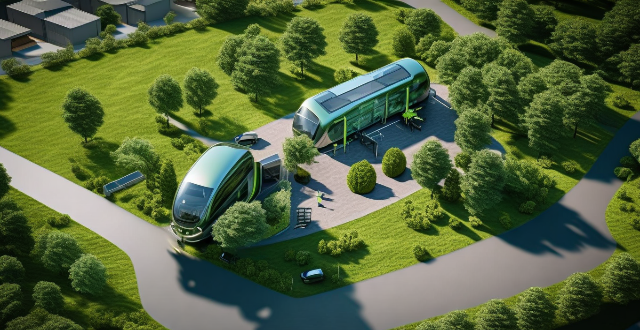The adoption of electric transportation systems is crucial for reducing greenhouse gas emissions and improving air quality. To promote their widespread use, strategies include government incentives and policies such as tax credits and rebates, grants for infrastructure development, regulation and legislation, and public sector leadership. Education and awareness campaigns through public education programs, marketing campaigns, and demonstration projects can also raise awareness. Infrastructure development involves building a network of charging stations, providing home charging options, and developing battery swapping stations. Technology advancements in battery technology, cost reduction, and autonomous driving can make electric vehicles more appealing. Collaboration and partnerships with automakers, energy companies, and international cooperation can accelerate adoption rates. By implementing these strategies, we can transition to cleaner and more sustainable modes of transportation.

How Can We Promote the Adoption of Electric Transportation Systems?
Introduction
The adoption of electric transportation systems is crucial for reducing greenhouse gas emissions and improving air quality. Here are some strategies to promote their widespread use:
Government Incentives and Policies
1. Tax Credits and Rebates: Offering tax credits and rebates for purchasing electric vehicles (EVs) can make them more affordable.
2. Grants for Infrastructure Development: Providing grants for building charging stations can increase accessibility to EV charging.
3. Regulation and Legislation: Implementing laws that encourage the use of EVs, such as zero-emission vehicle mandates or bans on fossil fuel vehicles.
4. Public Sector Leadership: Government agencies should lead by example by using electric vehicles in their fleets.
Education and Awareness Campaigns
1. Public Education Programs: Conducting educational programs about the benefits of electric transportation can raise public awareness.
2. Marketing Campaigns: Engaging marketing campaigns showcasing the advantages of electric vehicles can attract potential buyers.
3. Demonstration Projects: Organizing demonstration projects where people can experience electric vehicles firsthand can increase acceptance.
Infrastructure Development
1. Charging Station Availability: Building a network of charging stations, especially in urban areas and along major highways, is essential for convenience.
2. Home Charging Options: Providing incentives for home charging installations can make it easier for EV owners to charge their vehicles at home.
3. Battery Swapping Stations: Developing battery swapping stations where drivers can quickly exchange depleted batteries for charged ones can address range anxiety concerns.
Technology Advancements
1. Battery Technology: Investing in research and development of better battery technologies can lead to longer ranges and faster charging times.
2. Cost Reduction: As technology advances and production scales up, the cost of electric vehicles should decrease, making them more accessible to consumers.
3. Autonomous Driving: Integrating autonomous driving technology with electric vehicles can further enhance their appeal and efficiency.
Collaboration and Partnerships
1. Partnerships with Automakers: Collaborating with car manufacturers to promote electric vehicles and share knowledge can accelerate adoption rates.
2. Collaboration with Energy Companies: Working together with energy providers to ensure a reliable power supply for charging infrastructure is crucial.
3. International Cooperation: Engaging in international cooperation on electric transportation standards and best practices can foster global adoption.
Conclusion
Promoting the adoption of electric transportation systems requires a multifaceted approach involving government policies, education campaigns, infrastructure development, technology advancements, and collaboration between various stakeholders. By implementing these strategies, we can accelerate the transition to cleaner and more sustainable modes of transportation.